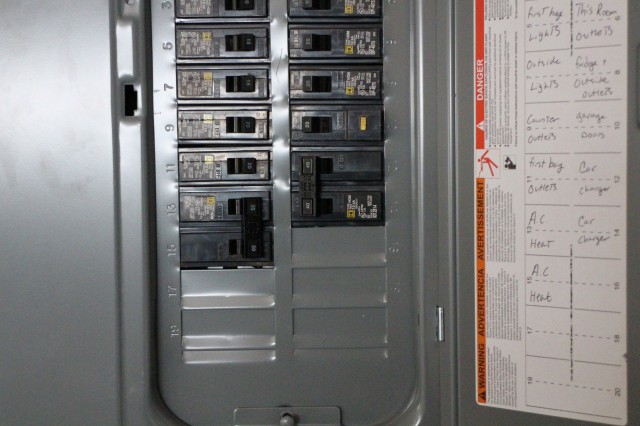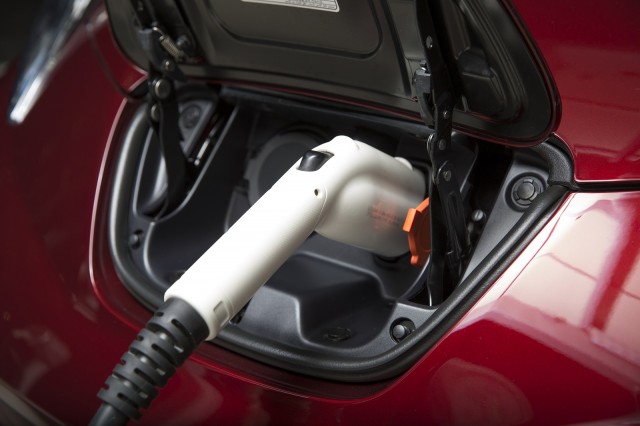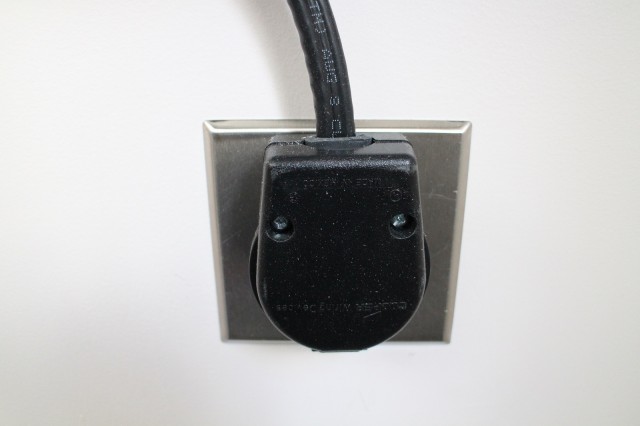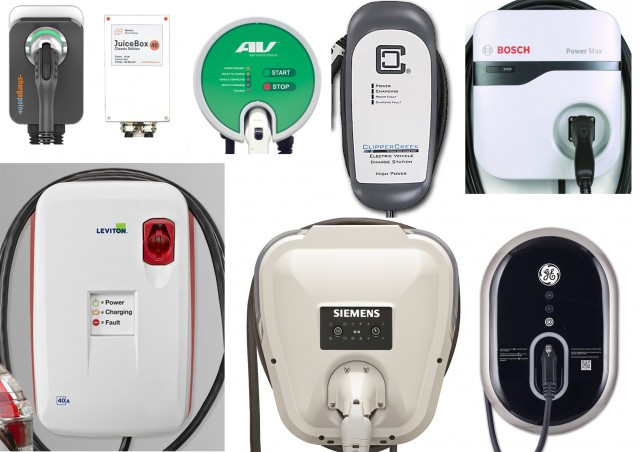Electric cars all come with a 120-volt charging cable that can charge the battery from a household socket if there are no other options.
all come with a 120-volt charging cable that can charge the battery from a household socket if there are no other options.
But sooner or later, most battery-electric car owners will want a 240-volt Level 2 charging station that can recharge the car as much as four times faster.
owners will want a 240-volt Level 2 charging station that can recharge the car as much as four times faster.
Owners of plug-in hybrids with ranges below 30 miles may find the standard charging cable fine, but as plug-in ranges rise, they too may decide a charging station will increase their all-electric driving.
While 240-volt charging stations aren't complicated, there are many different options on the market.
You will likely need to hire an electrician, too, so some preplanning is in order to ensure that you get the right charging station and the installation goes smoothly.
First, be aware of a little bit of terminology. Modern electric cars have the actual chargers built into them.
So the unit installed on your garage wall is not actually a "charger," although it is commonly called that. The unit is also called an EVSE, for Electric Vehicle Supply Equipment.
If you're looking to install something to charge your electric car in your garage, carport, or elsewhere, a "charging station" or EVSE is what you want.
in your garage, carport, or elsewhere, a "charging station" or EVSE is what you want.
We've used both terms interchangeably throughout this article.

Circuit-breaker box showing 240-Volt circuit for electric-car charging station
Wiring
If you are going to hire an electrician to install wiring and the dedicated circuit that charging stations need, consider asking him to put one in that carries at least 50 amps.
It will likely only cost slightly more, but will save you significant money in the future if you end up with a future electric car that can charge at a higher rate than today's offerings.
Plugging in vs hardwiring
Many charging stations come with a 240-volt plug on them.
Others are set up to be permanently hard-wired, with either a "pigtail" (a wire with bare copper ends) or a knock-out panel where a wire will run into the interior.
Either approach works, but you should know the pros and cons of each before you press the "BUY" button.

2016 Nissan Leaf
Plugged in: Getting an EVSE with a plug means your electrician can install an outlet without having the actual charging station there, letting you install it later on your own.
It also means that if the EVSE ever fails, or you want to upgrade to a more powerful station (within the limits of your wiring), you can install a new one on your own.
The plug on the EVSE also serves as a “service disconnect,” potentially eliminating the need for a local sub-panel installation or a separate disconnect box that may be required by code if your main circuit box is not within sight of the EVSE.
The plug on the EVSE also allows you to quickly dismount it and take it to another location if you move or rearrange your garage.
Hardwired: A hardwired charging station that fails will require an electrician to come out once to remove the defective unit, along with a possible second visit to install the new one. The same scenario plays out for upgrading to a new unit.
On the other hand, hardwiring can yield a cleaner installation. There is no junction box or plug to clutter things up or interfere with wrapping the cord around the EVSE to store it.
In the end, there is no right or wrong approach (unless your local code specifically requires hardwiring). It is a matter of personal choice.

NEMA 6-50 plug in socket
Terminology
Not all EVSEs labeled "40 amps" are the same. Some EVSEs are advertised that way because they are to be connected to a 40-amp breaker, although they actually only output 30 or 32 amps.
Other units are advertised as 40-amp because they output 40 amps, meaning they actually need to go on a circuit with a 50-amp breaker.
This confusion in labeling is partly the result of code compliance. For a device to be operated continuously for hours, it must operate at 80 percent or less of the maximum capacity of the circuit breaker and wiring.




No comments:
Post a Comment